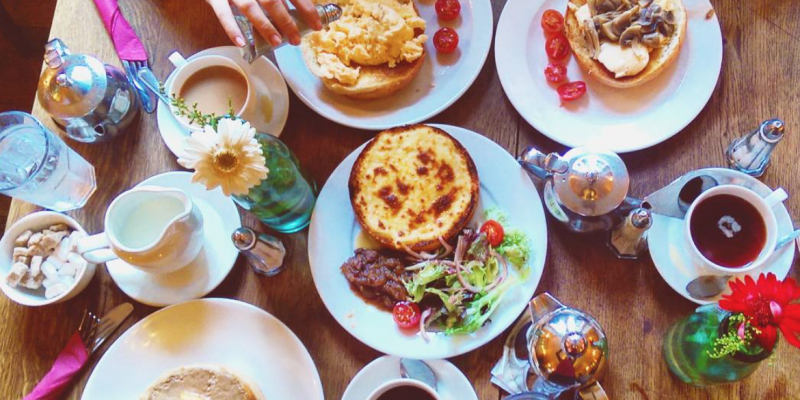Sally Lunn’s ★★☆

A twee tea house and restaurant in the oldest home in Bath
Sally Lunn's does a roaring business in the fields of quaint, twee, and veddy, veddy British, right down to the period costumed wait staff.
Sally Lunn’s is where the monstrous brioche-like Bath bun was invented in the 17th century. The location is reputedly the oldest house in Bath, built in 1482 and opened as a bakery around 1680, when the baker hired a French Huegnot immigrant named Solange ("Soli") Luyon, who introduced him to her native brioche, which together they morphed into a cake-like oversized roll, and a legend was born. (There's a kitchen museum downstairs detailing Sally Lunn's long history.)
Most dishes somehow involve some sort of topping on a platter-sized Sally Lunn's bun—though note you either get the top half (usually for sweet ones) or the bottom half (for savory ones—love both the cinnamon and the homemade lemon curd).
At 5pm they light the candles and switch to an evening and dinner menu of traditional trenchers—before plates, folks would just slap a a meal of steak, salmon, roast duck, or veggies on top of a "trencher," a long slab of bread (or, here, a Sally Lunn bun) to soak up the juices and provide a foundation. Then you'd eat the "plate." (Don't worry; these days they provide a proper plate underneath the bun as well). Reservations recommended for dinner.
















